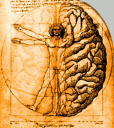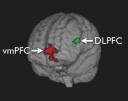Designers: Choreograph a Set of Mental Events
Thursday, May 7th, 2009 Improvisation as an art form has been used in a variety of ways to stimulate creativity and innovation in the workplace -sometimes as just a metaphor for team interactions but also as a training technique. As cognitive designers, we are interested in understanding the science behind why it works so that we can take it to the next level of application.
Improvisation as an art form has been used in a variety of ways to stimulate creativity and innovation in the workplace -sometimes as just a metaphor for team interactions but also as a training technique. As cognitive designers, we are interested in understanding the science behind why it works so that we can take it to the next level of application.
Seed Magazine published an interesting note, Creation on Demand, that provides some insights. Seed covers two recent fMRI (brain scan) studies that reveal improv is a choreographed set of mental events.
“These two brain-scanning studies provide an elegant view into our seething cauldron. They reveal a brain able to selectively silence that which keeps us silent. And just when we’ve found the courage to create something new, the brain surprises us with an expression of ourselves. We suddenly find our reflection—not in the mirror, or even in our words. It’s in the music. ”
Designs that seek to tap the power of improv must get participants to worry less about what they are trying to create and more about simply expressing themselves. Imagine features and functions that encourage and even prize raw unfiltered self-expression. Clearly not the typical mood on a corporate innovation team worried about the voice of the customer, deadlines and what upper management thinks.



